|
|
Кацусика Хокусай. Тридцать шесть видов Фудзи: № 39. Ёсида на тракте Токайдо冨嶽三十六景 東海道吉田Yoshida on the Tōkaidō (Tōkaidō Yoshida), from the series Thirty-six Views of Mount Fuji (Fugaku sanjūrokkei)Artist: Katsushika Hokusai (1760–1849)Period: Edo period (1615–1868)Date: ca. 1830–32
Because of its scenic location, the teahouse is called Fujimi chaya (literally, teahouse with a view of Mount Fuji), a name that is written on the large horizontal panel at the center. The two women at the window enjoy the panoramic vista of Fuji. The triangular arrangement of the figures in the foreground echoes the shape of Fuji. (metmuseum)
The artistic culture behind the artwork is borrowed from the Edo period (1615-1868) when the Japanese society believed that The Mount Fuji had secret immortal powers. Hokusei, artists, and historians of the time were virtually fascinated by the cone of the Volcanic Mountain that they came up with different perceptions of its nature through paintings that depicted various seasons, conditions, weathers, and locations. The Yoshida at Tokaido was produced in ca. 1830-1868 by Hukosei using an Ukiyo-e style in Japan. The print was created on a Polychrome woodblock print; ink and colour on paper with dimensions of H. 10 1/8 in. (25.7 cm); W. 15 1/4 in. (38.7 cm). In the print Hukosei depicts a scenic location on a teahouse called Fujimi Chaya, which translates to a teahouse with a view of Mount Fuji. The name is also written on the horizontal panel at the center of the print. There are two women who seem to be enjoying the Vista of Fuji. It has a triangular arrangement of figures in the foreground who represent the shape of The Mount Fuji. The print was published by Nishimura Yohachi from Japan. The publication of the print in other recent exhibitions such as the Landscape in Japanese Art, of 2002 that was published by Hibino Yohachi. This particular print has been done on dimensions of 25.8 x 37.5 cm (10 1/8 x 14 3/4 in,), on a colour wood block print; Oban. Katsushika Hokusai learned part of his painting from his mirror-maker farther Nakajima Ise who used to make some paintings on the frames of his mirrors. Although he was originally born Tokitaro, Hokusai had more than thirty other names during his entire career. He was so passionate about The Mount Fuji that he came up with The Thirty-six Views of Mount Fuji series that had amazing unique prints of The Mount Fuji from different locations. (thehistoryofart.org)
This print is the only one in the Fuji series to show the interior of a building and travelers in the foyer and on the raised platform of a room. The sign that reads “Fuji-viewing Tea House” announces that the house serves tea as well as offers travelers a good view of the mountain. Two women already occupy the raised platform. One gazes at Fuji through a large open window, and the other may be ordering cups of tea from the waitress standing in the foyer with her serving tray. Pointing to Fuji, she seems to be advising her clients to view the mountain while waiting for their tea. The palanquin on the floor at the entrance, with one bearer visible, was perhaps used by one of these women. An old man in front of the palanquin repairs a straw sandal, pounding the material to soften it. Two men at the right, apparently exhausted after their long walk, sit on the platform near the entrance, puffing tobacco. The composition is somewhat similar to that of Turban-shell Hall of the Five Hundred Rankan Temple (cat. 28), where people gaze at the mountain from an outdoor veranda. This print is livelier, with more animated people. Before Hokusai became famous as a landscape print artist, he produced many prints depicting beautiful women, a classic subject. This print reveals that this earlier accomplishment also served him in his new landscape series. Yoshida, now part of the present-day city of Toyohashi, was a famous castle town on the Tökaidö Road. Here Hokusai makes his subject a scene of human interaction with Fuji, not the renowned landmark. Hokusai placed his publisher’s name, Eijudö, and its marking on the round hats near the door post, a witty way to include such an advertisement. The key-block was printed in blue. (The Asian Art Museum of San Francisco, HOKUSAI AND HIROSHIGE – Great Japanese Prints from the James A. Michener Collection, Honolulu Academy of Arts: The Asian Art Museum of San Francisco, 1998 Page 83. Cat. 34)
Ёсида на тракте Токайдо
Район Ёсида на дороге Токайдо — это современный город Тоёхаси в префектуре Аити. На этой станции у дороги находился знаменитый чайный домик «Фудзими тясицу». Хокусай изображает женщин, которые наслаждаются видом Фудзи, отдыхая на веранде этого домика. Надпись на чайном домике гласит «Фудзими тясицу» (чайный домик для любования на Фудзи). Рядом с надписью изображен сидящий мужчина. На его одеждах и на зонтике иероглифы: «вечность» и «долголетие», а также четко читается герб с тремя кругами на фоне горы. Известно, что этот знак использовался в рекламе издательства «Нисимура Эйсюндо», в котором также издавались гравюры этой серии. Название этого издательства можно встретить то на одной, то на другой гравюре. В период Эдо шла ожесточенная борьба за первенство среди издательств укиё-э, поэтому часто на гравюрах ставили подобные изображения в целях саморекламы. Под вывеской «отяцукэ» (рис, политый зелёным чаем) справа есть также маленькая табличка «Нэмото Ёсида Хокути». Известно, что Хокути – это прозвище господина Ёсида. «Хокути» в переводе с японского означает огниво, кремний или трут (то, при помощи чего добывали огонь). В этой лавочке его продавали в качестве сувениров.
Katsushika Hokusai. Yoshida on the Tōkaidō, from the series Thirty-six Views of Mount Fuji
Анимированная и осовремененная версия гравюры, выполненная художником Segawa37 для конкурса the GIFs - Award of GIF creator 2015:
Чайный дом Фудзими на станции Ёсида дороги Токайдо и поезд Синкансэн. На анимации мимо отдыхающих путников, путешествующих пешком, проносится сверхскоростной поезд-пуля синкансэн.
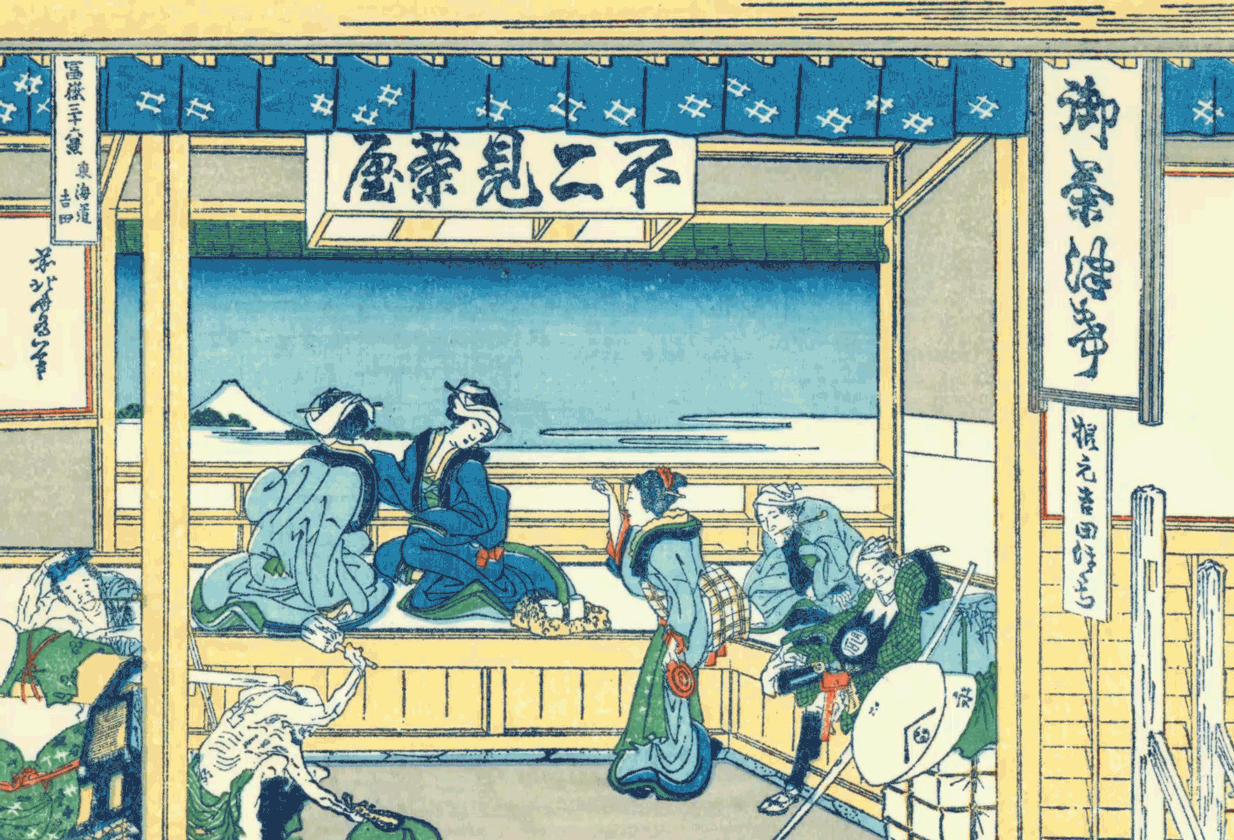
Все 46 гравюр серии «Тридцать шесть видов Фудзи» | Thirty-six Views of Mount Fuji | 富嶽三十六景 | Fugaku Sanjūrokkei
26 августа 2023, 12:57
0 комментариев
|
Партнёры
|

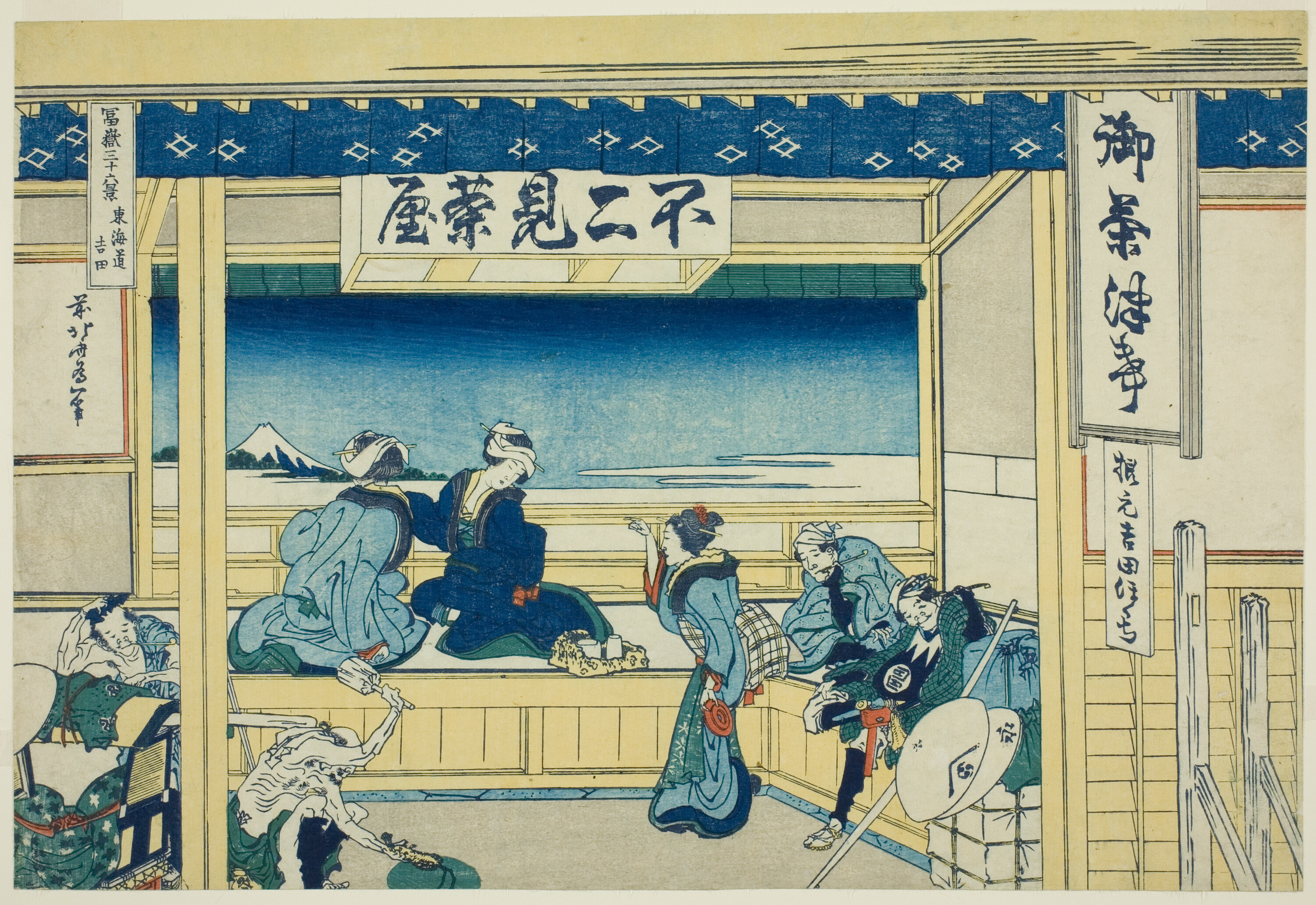

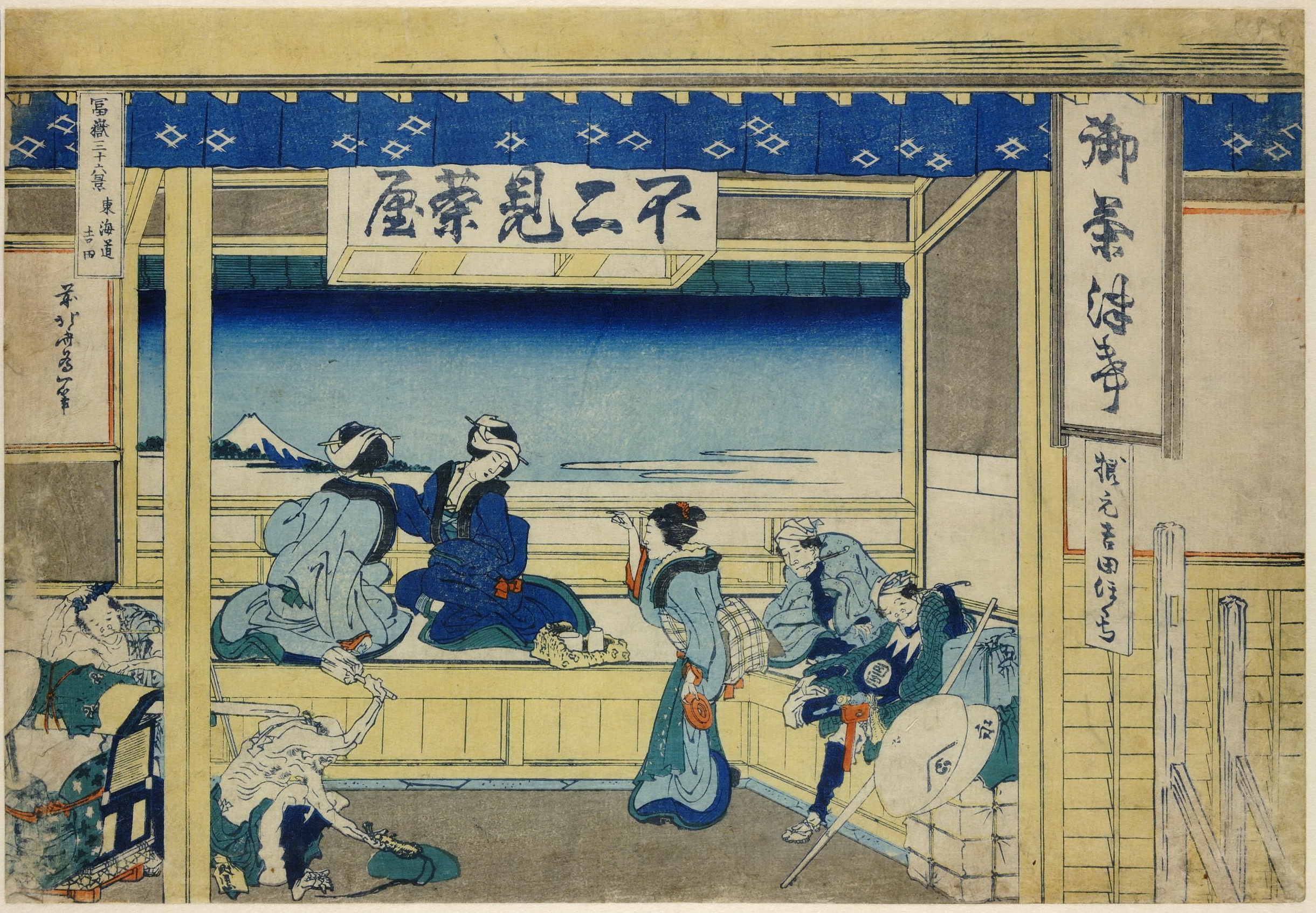
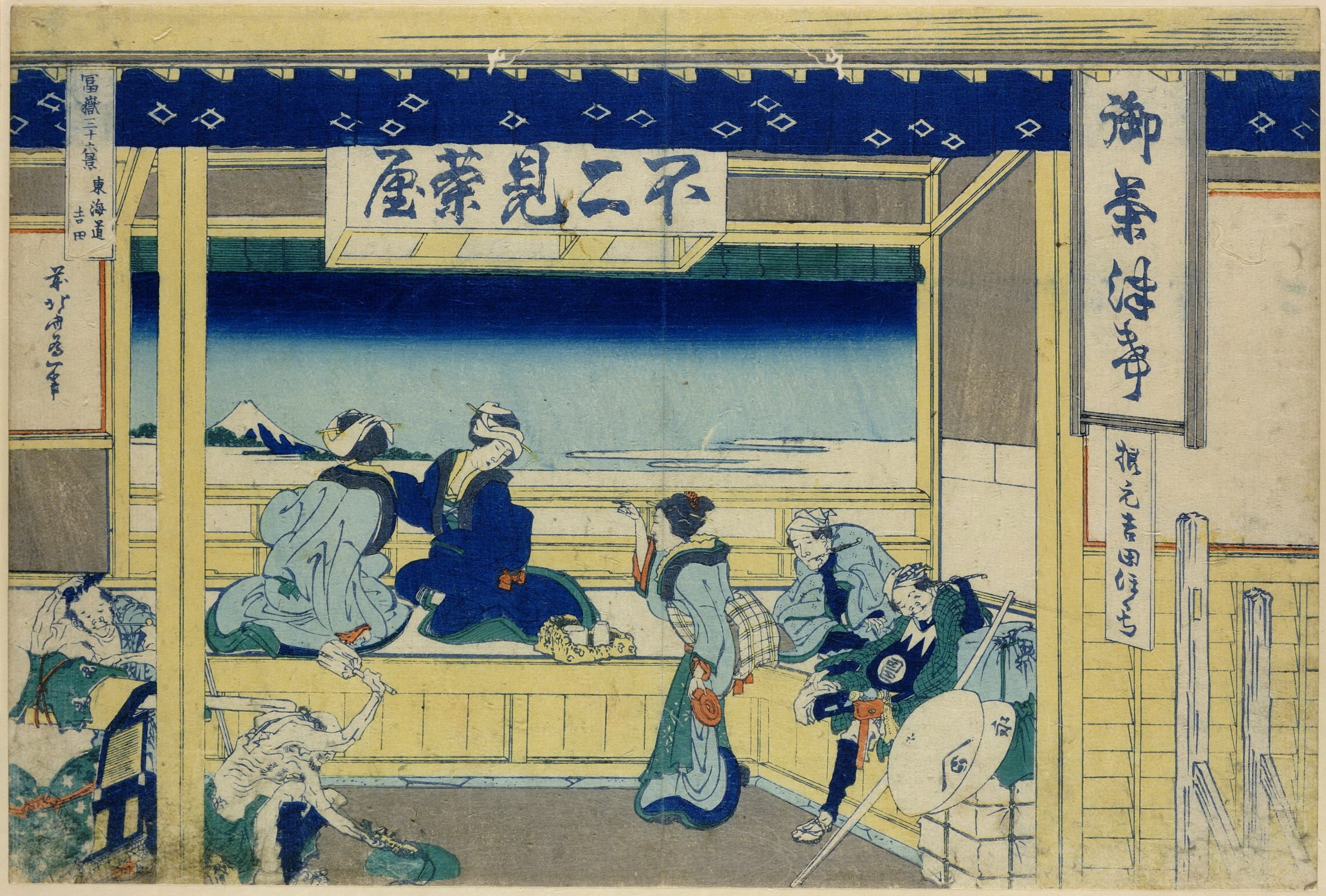
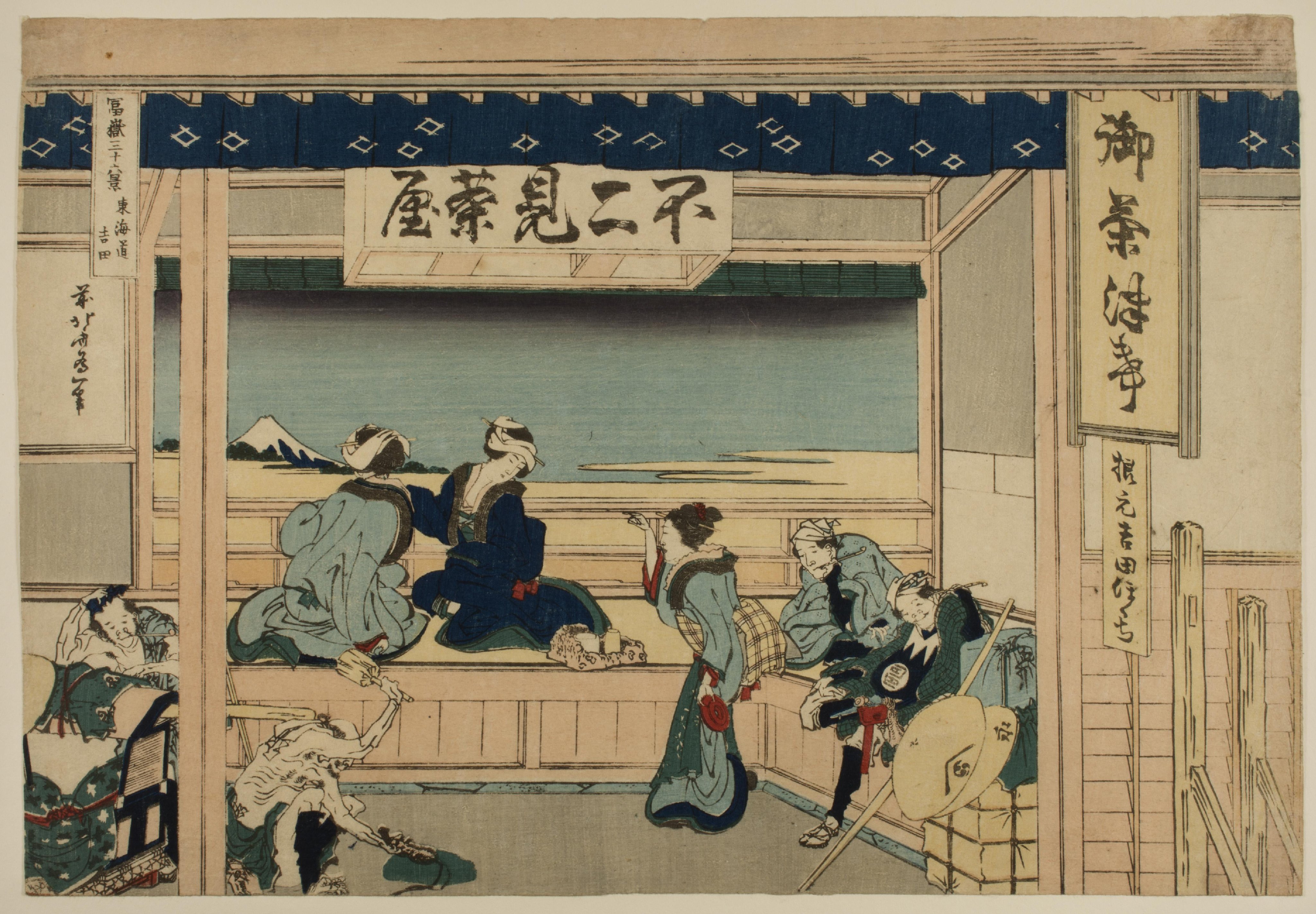
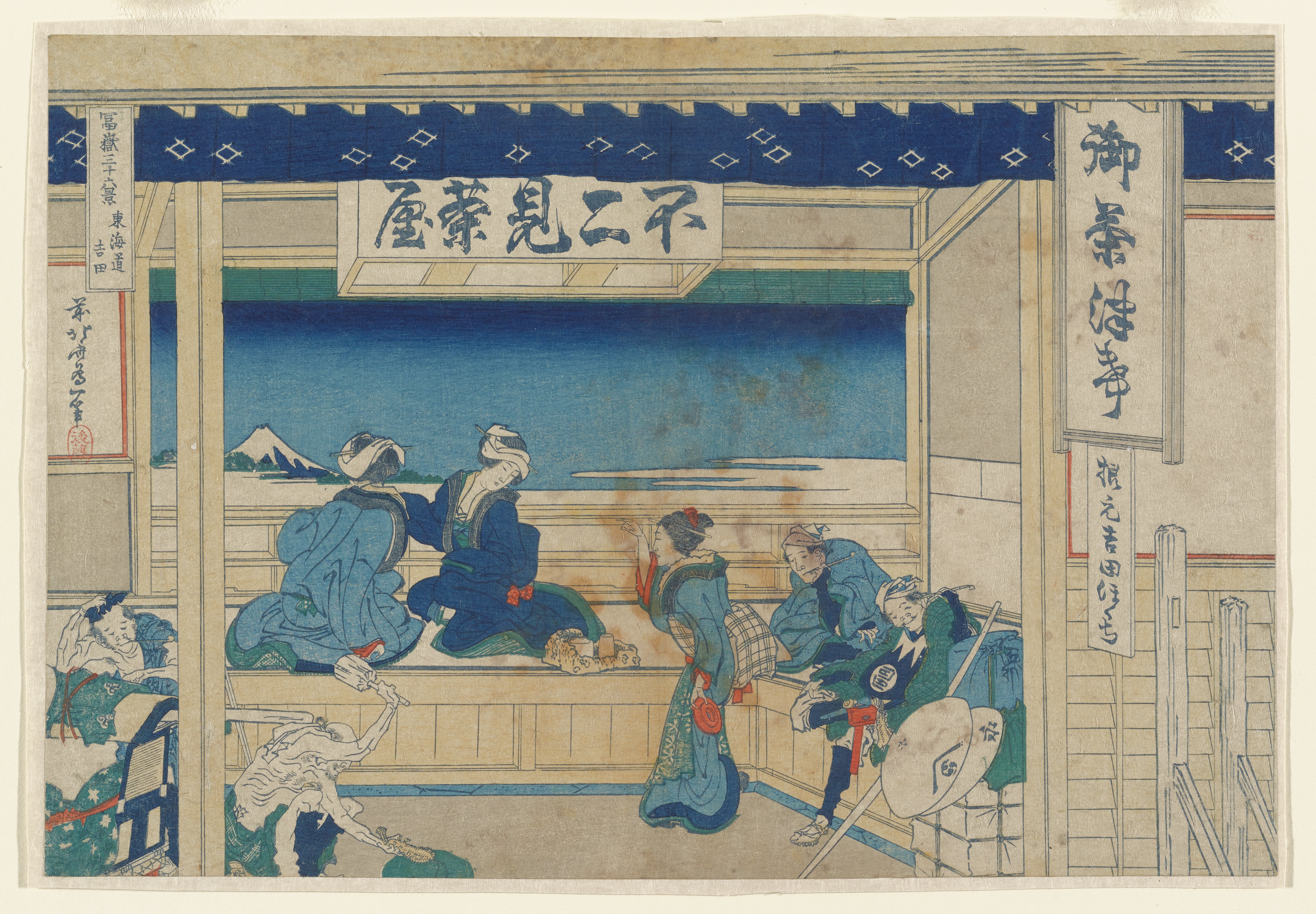
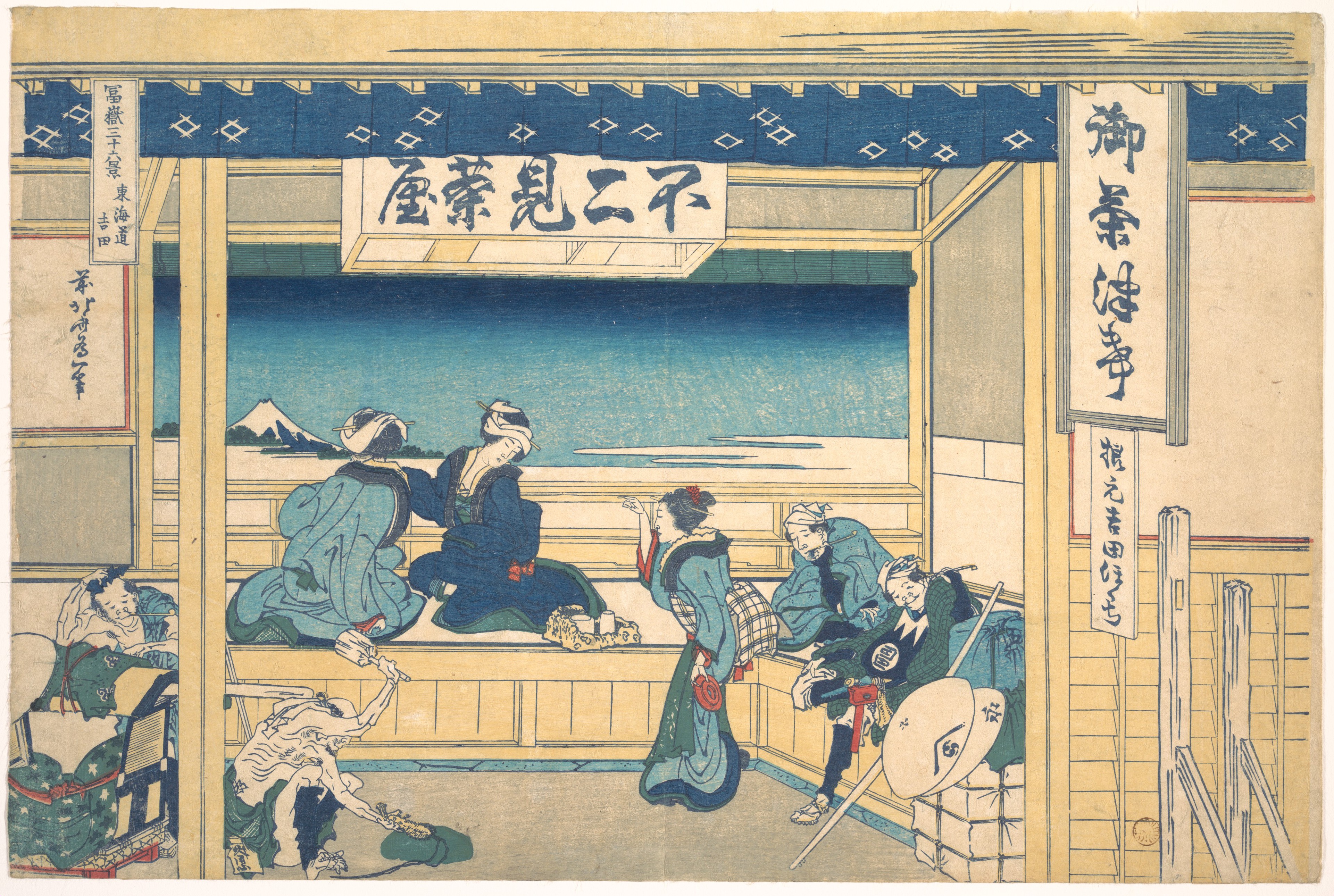
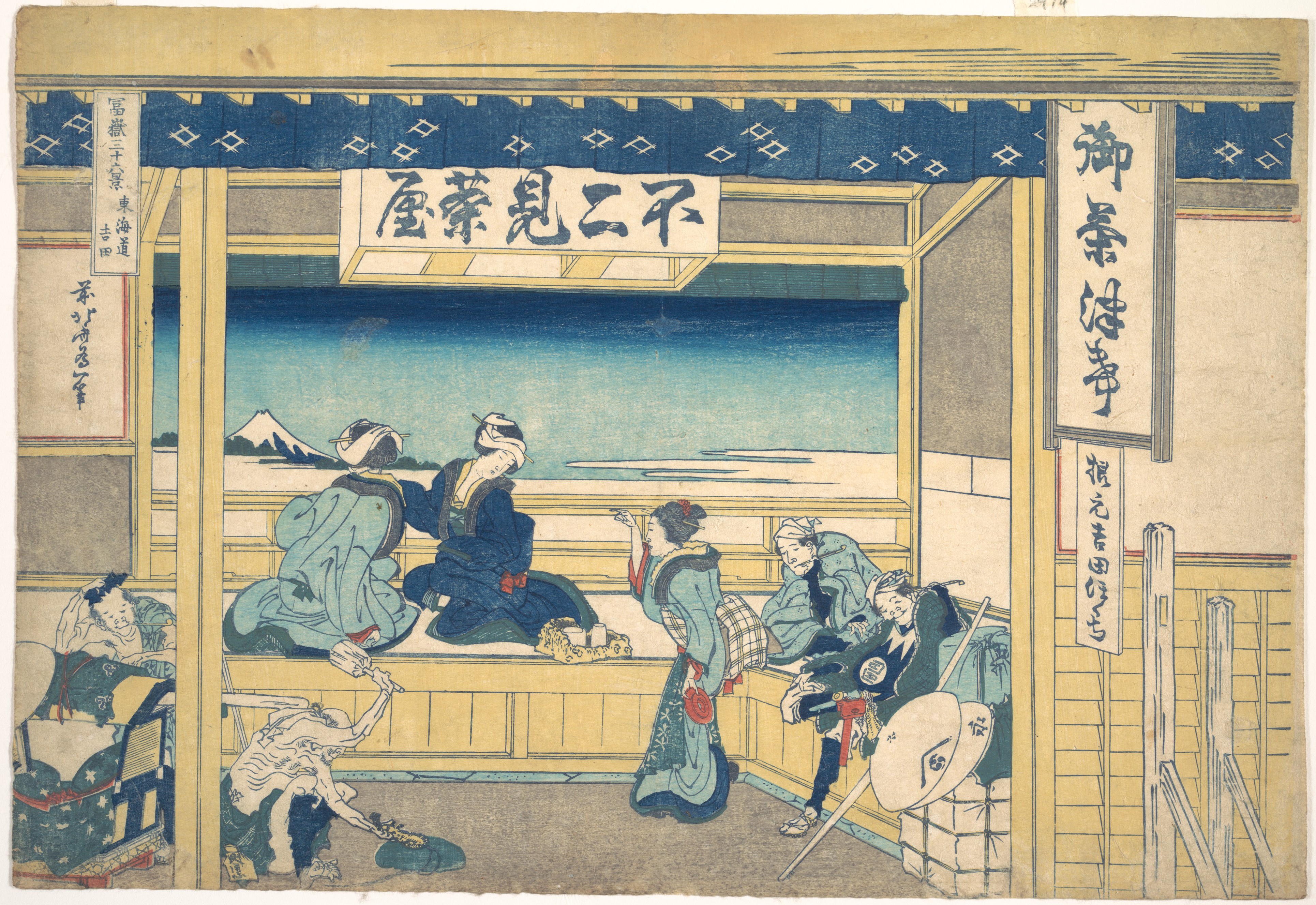
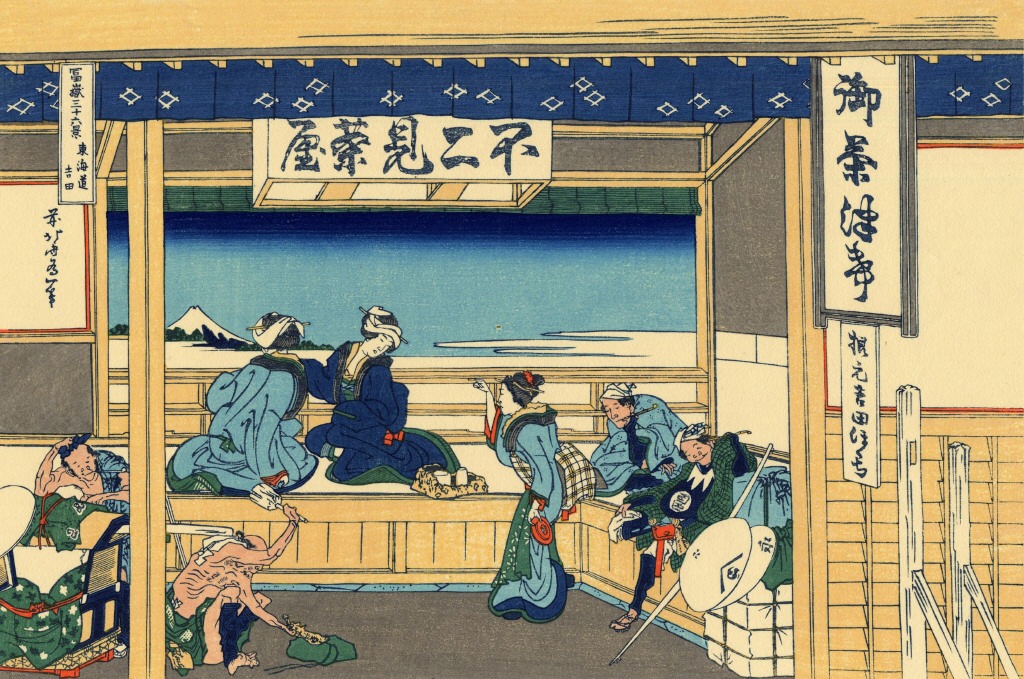
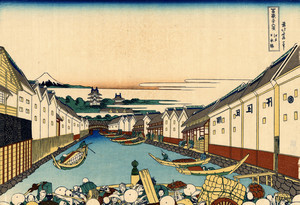
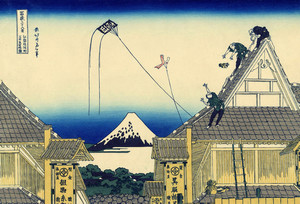
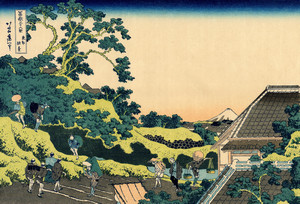
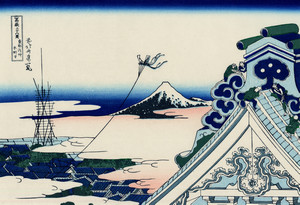
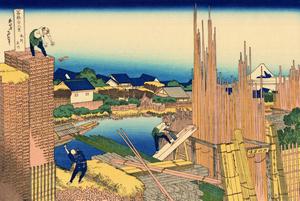
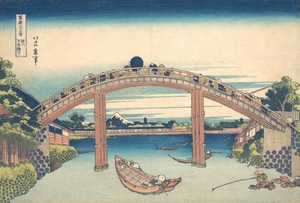
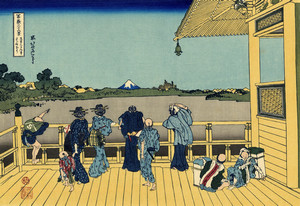
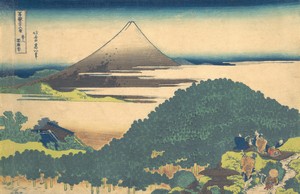
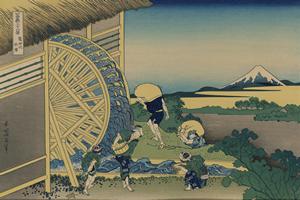
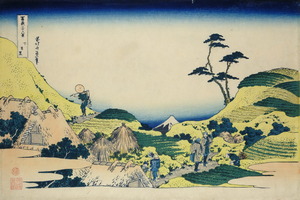
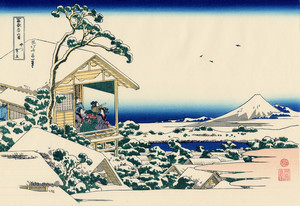
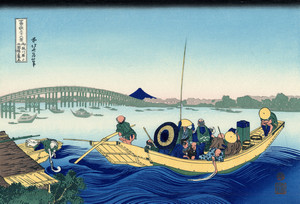
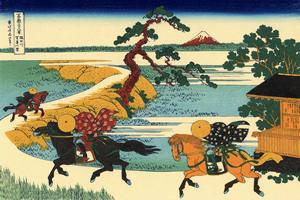
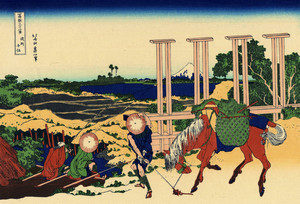
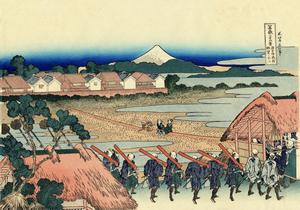
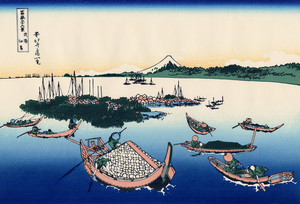
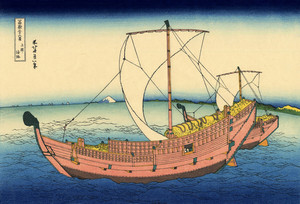
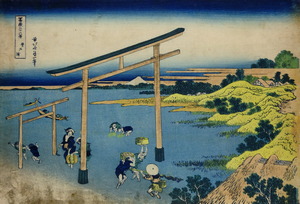
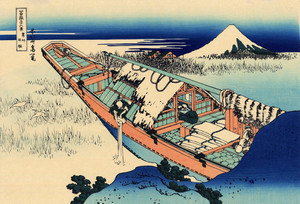
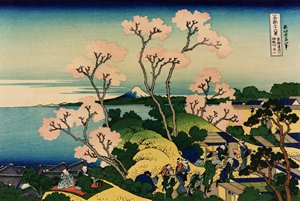
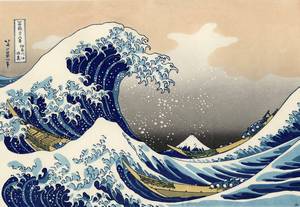
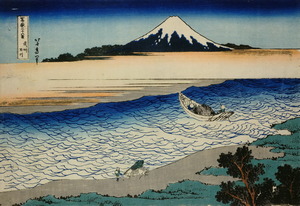
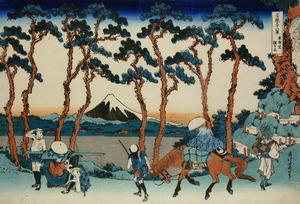
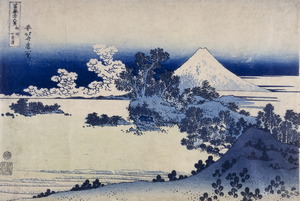
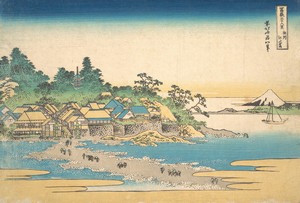
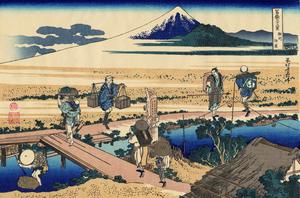
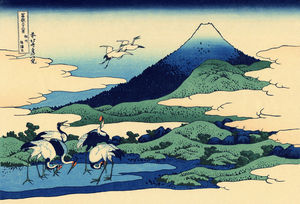
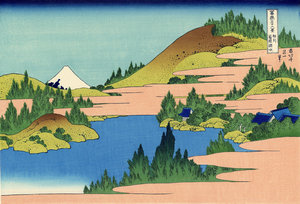
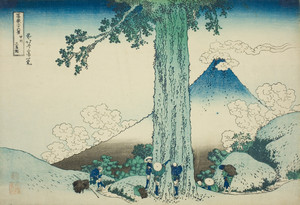
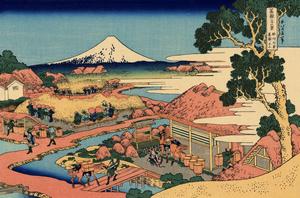
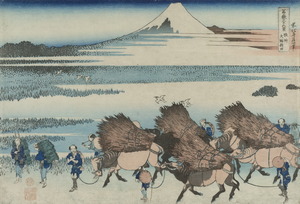
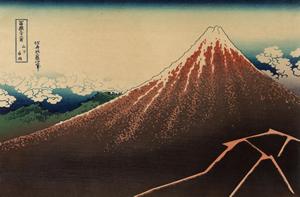
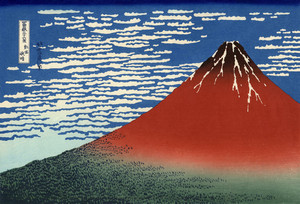
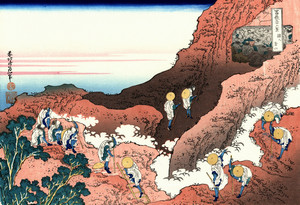
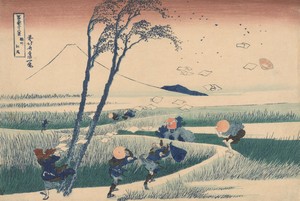
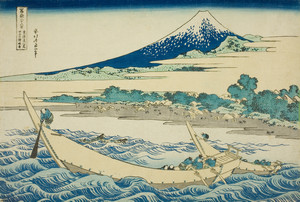
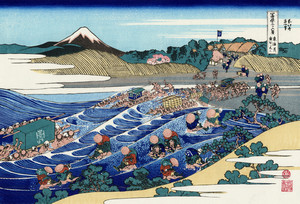
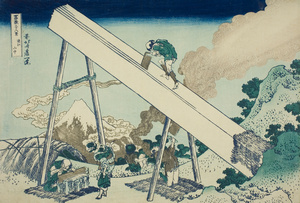
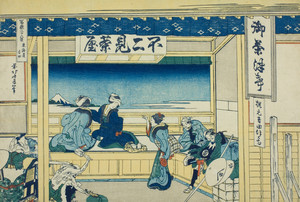
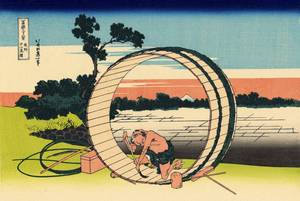
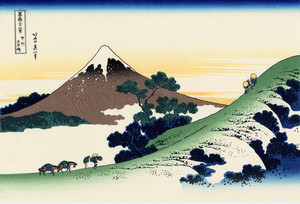
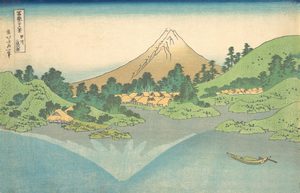
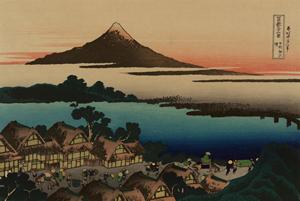
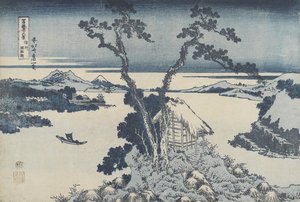
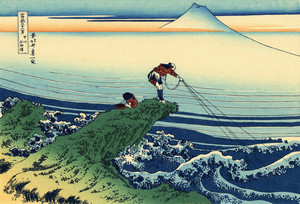
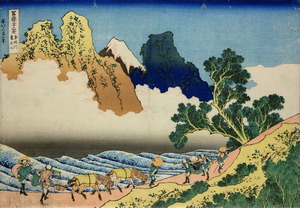





Комментарии
Добавить комментарий